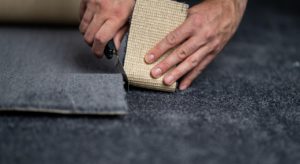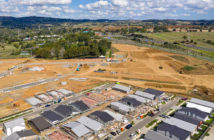This follows a decision by Kainga Ora to award a multi-million-dollar wool carpet contract to Bremworth. The deal will see around 95 tonnes of wool, the annual fleece of more than 31,000 New Zealand sheep, used to help provide warmer, healthier and more fire-resistant homes for some of the country’s most vulnerable.

The move has been hailed as a turning point for the natural fibre sector and looks set to help expand the use of wool in private residential and commercial developments as well.
The decision by Kainga Ora to award a multimillion-dollar contract for the supply of wool carpet in its new build and renovated homes is being hailed as a breakthrough for New Zealand’s natural fibre sector by industry experts.
The selection of locally owned manufacturer Bremworth as a supplier of wool carpet for Kainga Ora’s newly constructed and retrofitted homes will see wool carpet installed in almost 1,000 planned state housing projects annually.
Bremworth chief executive Craig Woolford says the win has far-reaching implications for both public sector procurement, the rural community and the broader property development industry.
“This isn’t just a commercial contract, it’s a signal to the entire construction sector that wool carpet meets the durability, safety and sustainability standards expected of any high-traffic housing environment.
“Government agencies like Kainga Ora are seen as setting the benchmark for the wider industry,” he says.
“Wool has now passed one of the most stringent testing processes in the country. It’s proof that when put on a level playing field, New Zealand-made natural fibres can not only compete, they can win.”
The contract announcement follows extensive industry lobbying and sector advocacy, which pushed for wool manufacturers to be able to pitch for government building projects.
Previously, Kainga Ora issued a Request for Proposal for the national supply of carpet and underlay materials to support Homes and Communities’ maintenance and construction work which stated they “are not looking to procure wool carpet”.
“The fact this contract has been awarded is the result of years of effort to ensure wool had a seat at the table,” Woolford says. “The inclusion of wool is a win for the environment, for New Zealand’s farmers and future tenants of these homes.”
Beyond the public housing win, Bremworth is already seeing positive movement in the private sector as a result of the announcement.
“We’re now actively being invited to present wool carpet solutions to property developers and construction firms involved in Kainga Ora builds, and those working on private developments. It’s giving us access to projects that had previously defaulted to synthetic solutions.”
Woolford says that while the production volumes for the Kainga Ora contract represent a relatively small portion of Bremworth’s total capacity, the strategic value is enormous.
“To produce 20,000 broadloom metres of wool carpet, you’re looking at approximately 95 tonnes of wool, the annual fleece of more than 31,000 New Zealand sheep. It’s a demonstration of the potential scale of opportunity for our wool sector.”
“This proves performance at scale and under pressure. It also opens the door for broader adoption in schools, commercial fit-outs and private homes.”
He says wool’s natural properties, including its flame resistance, air purification capabilities, thermal and acoustic insulation and biodegradability make it uniquely suited to New Zealand’s sustainability goals.
“Kainga Ora’s new state homes are built to the latest standards, designed to deliver better warmth, comfort and health outcomes for some of New Zealand’s most vulnerable residents, and flooring choices like wool carpet play a vital role in achieving that.”
“This is an important milestone, but also just the beginning of a much bigger conversation about the role of New Zealand wool in our built environment.”



